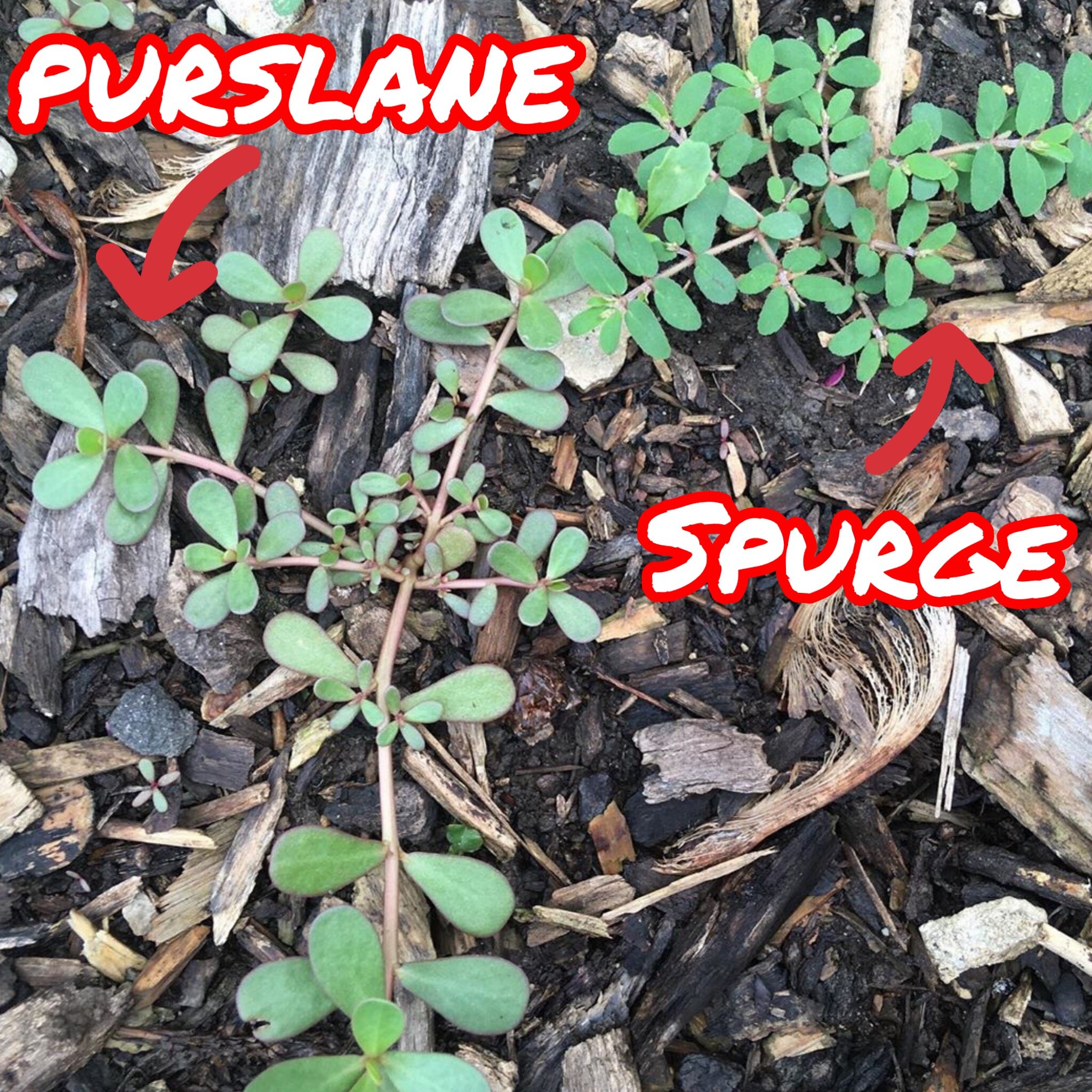Purslane’s robust ability to thrive in poor soil paired with its impressive nutritional accolades makes Purslane an absolute rockstar in the edible weed world. One of the things everybody talks about is the fact that purslane has more omega-3 fatty acids than any other leafy plant known on Earth. Often classified as a pesky weed, it really ought to be relabeled instead as a succulent herb.
ORIGINS
Purslane is a plant native to India, Persia, and the Meditteranean. However, it has spread throughout the world. Some countries revere it as a delicious edible plant while others consider it as a pesky weed. There are some conflicting stories about how it first arrived in North America. Some sources suggest that immigrants of India intentionally brought purslane to our shores as a nutrient dense crop. But other research suggests that the American Indians were eating it before they made contact with Europeans.
HABITAT
Purslane is often found thriving in poor soil, and in the cracks of sidewalks and driveways. It often pops up in container gardens, flowerbeds, gardens, fields, waste ground and roadside. It's succulent characteristic makes it very drought tolerant. Purslane is known to show up in areas of distubed soil so you’ll often see them pop up after any kind of tilling. Tilling the soil brings seeds to the surface where they quickly germinate. What is interesting is that its tiny seeds can remain viable for up to 40 years just waiting for the right conditions in order to germinate. Gardeners often are perplexed when they uproot a purslane plant only to find that it has rerooted itself from on top the soil. It is truly a robust plant!
NUTRITION PROFILE
THE MOST OMEGA-3 FATTY ACIDS OF ANY PLANT
7X MORE BETA-CAROTENE THAN CARROTS
6X MORE VITAMIN E THAN SPINACH
It has beta carotene (seven times more of that than carrots), Vitamins A, B2, B6, C and E (six times more E than spinach), magnesium, calcium, potassium, folate, lithium, and iron It is also a good source of Thiamin, Niacin, Folate, and is 2.5% protein
Why pay for fish oil supplements when you can grow your own Omega-3 fatty acids as part of your edible landscaping (especially when it takes little effort to grow purslane).
Consuming purslane has been shown to be an antidote to caffeine and reduce jitters. The purslane plant is also rich in magnesium, which has a close connection with sleep. If you find yourself tired throughout the day and unable to sleep at night, you might be lacking enough magnesium in your diet. Purslane is rich in vitamin B2, which has been proven to help alleviate headache and migraine pain. Eating a diet rich in vitamin B2 can reduce the frequency of headaches as well as lessen the time the headaches stick around.
Milk isn't the only thing that can promote strong bones. Purslane contains bone-building nutrients like iron, calcium, magnesium, and manganese to help prevent osteoporosis. Why not cook up some fresh purslane leaves in some olive oil instead of reaching for that glass of milk?
Purslane is antibacterial, antiscorbutic, depurative, diuretic and febrifuge. The leaves are a very rich source of omega-3 fatty acids which prevents heart attacks and strengthens the immune system.
IDENTIFICATION
Teardrop Shaped Leaves
Succulent Leaves
Leaves grow symmetrical of each other
Reddish Stem
No milky-white secretion from broken stem.
Purslane has yellow flowers that occur singly or in small terminal clusters. When fully open, each flower is about .5 cm(¼") across, consisting of five petals, two green sepals, numerous yellow stamens, and several pistils that appear together in the centre of the flower. These flowers open up for a few hours during bright sunny mornings. Purslane flowers bloom from mid-summer through the early fall and lasts about 1 to 2 months. Each flower is replaced by a seed capsule that splits open around the middle to release the numerous small, black seeds.
HOW TO EAT
How do people eat purslane? Once you’ve cut off the root, the individual stems need to be washed carefully. Purslane has little crevices to hold the soil, so you really need to use a hose to get ALL the dirt off.
It can be eaten as a cooked vegetable and is great to use in salads, soups, stews or any dish you wish to sprinkle it over.
Purslane is somewhat crunchy and has a slight lemony taste. Some people liken it to watercress or spinach, and it can substitute for spinach in many recipes. Young, raw leaves and stems are tender and are good in salads and sandwiches. They can also be lightly steamed or stir-fried. Purslane’s high level of pectin (known to lower cholesterol) thickens soups and stews.
Purslane is usually tossed into salads or added to soups in the Mediterranean area
In Mexico, it’s a favorite addition to omelettes and tacos.
Purslane can also be lightly steamed for 4 to 5 minutes, then served with salt and a little butter.
Purslane goes very well mixed with cucumber and topped with some oil-and-vinegar dressing.
Also try adding purslane to smoothies or juicing it.
If you harvest early in the morning, it will have a more zestier flavor profile.
PERMACULTURE FUNCTION
As amazing as purslane is, sometimes it grows where you don’t want it to. If you are trying to control purslane the number one rule is don't let it go to seed. About three weeks after you notice seedlings, the flowers and seeds will be produced. Also plants or plant pieces that are uprooted but not removed can root back into the soil. Again, that could be either depressing or exciting. A common joke is that running a tiller through purslane is called purslane multiplication. This proves to be just another reason that supports growing food with no til / low til methods such as the “Back-to-Eden” approach.
DANGEROUS LOOK-ALIKES
Spurge
Hairy stem
Oblong leaf shape
Broken stem results in milky white latex-like fluid.





